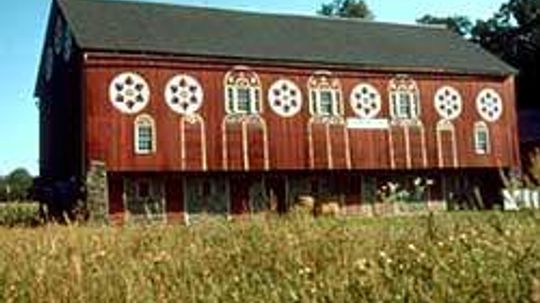Throughout history, the enigmatic allure of red barns has captivated our collective imagination. In this article, we delve into the profound symbolism behind these iconic structures that dot the rural landscapes.
A Testament to Tradition and Resilience
Red barns stand as enduring testaments to a bygone era when agrarian life was at its zenith. Their vibrant crimson hue serves as a visual reminder of the resilience and fortitude exhibited by early American farmers who tirelessly worked the land.
These barns were meticulously painted with layers upon layers of red paint, not merely for aesthetic purposes but also for practical reasons. The iron oxide pigment found in red paint acted as a natural preservative, protecting the wood from rotting and extending its lifespan.
Beyond their utilitarian function, however, red barns became emblematic of community cohesion and shared values. They served as gathering places where neighbors would come together during harvest seasons or lend support to one another in times of need.
A Nod to Scandinavian Heritage
The origins of painting barns red can be traced back to European settlers who brought with them their rich cultural traditions. Particularly influential were Scandinavian immigrants who arrived on American shores in significant numbers during the 19th century.
In Scandinavia, it was customary to use a mixture called “falu rödfärg” – composed primarily of copper-rich iron ore – which imparted an unmistakable deep-red color onto buildings. This tradition seamlessly transitioned across continents and took root within rural communities across America.
An Expression of Wealth and Prestige
In addition to their symbolic significance rooted in heritage and resilience, red barns also came to represent a certain level of affluence and prestige. As farming practices evolved, wealthier landowners began to construct larger barns with more elaborate designs.
These grandiose structures were often painted in vibrant shades of red, signaling the prosperity and success of their owners. The boldness of the color choice served as a visual proclamation of one’s agricultural prowess and elevated social standing within the community.
A Timeless Legacy
In conclusion, the enduring tradition of painting barns red transcends mere practicality or aesthetics. It is an embodiment of our collective history, resilience, and cultural heritage. These iconic structures continue to dot our landscapes today, reminding us not only of simpler times but also serving as tangible links to our past.


